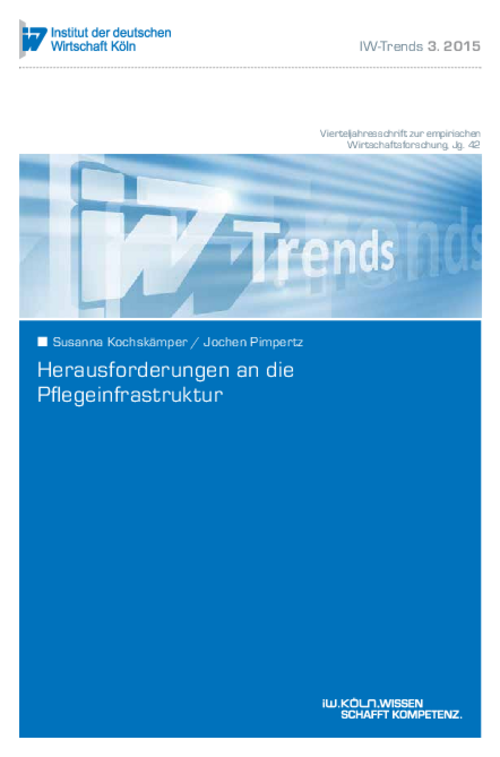In an ageing population the number of those in need of long-term care increases. Fulfilling this need is not only a matter of providing additional nursing staff. It is equally important to establish the corresponding infrastructure on an adequate scale. By 2030 up to 220,000 additional places will be required nationally in residential care alone. With considerable differences in their demographic trends and the level of their existing facilities, Germany’s individual states all face different challenges. However, common to them all is the need to waste no time in taking strategic decisions for the development of a long-term care infrastructure appropriate to the needs and preferences of their populations.

Infrastructure for Long-Term Care Faces Challenges
IW-Trends


Susanna Kochskämper / Jochen Pimpertz: Herausforderungen an die Pflegeinfrastruktur
IW-Trends

More on the topic

Possible Developments in the Supply of Skilled Workers up to the Year 2040
The German labor market is on the verge of a fundamental upheaval. While the number of people in the labor force has risen steadily in recent decades, it is likely to drop significantly as soon as the baby boomers retire.
IW
The Social Situation of Young People from Non-German-Speaking Families
An analysis of the microcensus shows that in 2017, around 2.4 million children and adolescents in Germany lived in non-German-speaking households. This corresponds to 17.7 per cent of all minors (under the age of eighteen) and 47.0 per cent of those with a ...
IW